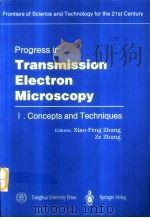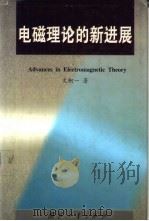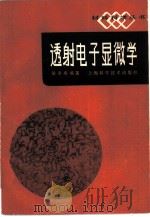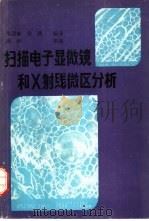《透射电子显微学新进展 英文版 第1卷 理论和方法》
| 作者 | 章效锋,张泽主编 编者 |
|---|---|
| 出版 | 北京:清华大学出版社 |
| 参考页数 | 431 |
| 出版时间 | 1999(求助前请核对) 目录预览 |
| ISBN号 | 730203589X — 求助条款 |
| PDF编号 | 810393058(仅供预览,未存储实际文件) |
| 求助格式 | 扫描PDF(若分多册发行,每次仅能受理1册) |

CHAPTER 1 The Modern Microscope Today1
1 Introduction1
2 Microscope Development2
3 The Modern Microscope3
3.1 Introduction3
3.2 Electron optics: Lenses5
3.3 Electron Optics: Microscope12
3.4 Vacuum System21
3.5 Image Acquisition25
3.6 Energy Filtering32
4 Microscopes in the Future36
4.1 Monochromators: Improving the Energy Spread36
4.2 Cs Correctors: Improving the Spherical Aberration Coefficient38
4.3 Computer Control: Automated and Remote Operation39
References41
CHAPTER 2 The Quest for Ultra-High Resolution43
1 introduction43
2 Imaging Concepts48
3 TEM, STEM and Diffraction Modes58
3.1 TEM Mode58
3.2 STEM Mode59
3.3 Diffraction Modes64
4 The Use of Ultra-High Voltages65
5 The Correction of Aberrations67
6 Electron Holography70
6.1 In-Line STEM and TEM Electron Holography70
6.2 Off-axis Electron Holography75
7 Combinations of Electron Diffraction and Imaging: Ptychography79
8 Atomic Focusers83
9 Discussion89
References93
CHAPTER 3 Z-Contrast Imaging in the Scanning Transmission Electron Microscope97
1 Introduction97
2 Principles of the Method100
2.1 Formation of an Incoherent Image100
2.2 Probe Formation103
2.3 Incoherent Scattering105
2.4 Dynamical diffraction109
3 Advantages of Z-Contrast Imaging114
3.1 Improved Resolution114
3.2 Directly Interpretable Image117
3.3 High Compositional Sensitivity119
3.4 Simultaneous Conventional HREM Image122
3.5 Atomic Resolution Spectroscopy125
4 Problems127
Appendix: Incoherent Imaging of Weakly Scattering Objects128
References129
CHAPTER 4 Inelastic Scattering in Electron Microscopy-Effects, Spectrometry and Imaging133
1 Inelastic Excitation Processes in Electron Scattering133
2 Phonon Scattering137
3 Effects of Inelastic Excitations on Elastic Wave140
3.1 The Debye-Waller Factor140
3.2 The Absorption Potential141
4 Signal from Thermal Diffuse Scattering141
4.1 Formation of Z-contrast Imaging141
4.2 The Frozen Lattice Model for Phonon Scattering144
4.3 Effects on Electron Holography146
4.4 Effect on Atomic-Resolution Lattice Imaging149
5 Signal from Plasmon Excitation152
5.1 Volume Plasmon Excitation153
5.2 Surface Excitation in Nanoparticles154
6 Atomic Inner Shell Excitation157
6.1 Composition Microanalysis157
6.2 Near Edge Fine Structure and Bonding in Crystals158
6.3 White Lines and the Occupation Number of the D-Band Electrons160
6.4 Quantifying Oxygen Deficiency in Oxides162
7 Energy Filtered Electron Imaging164
7.1 Composition-Sensitive Imaging Using Valence-Loss Electrons166
7.2 Composition-Sensitive Imaging Using Inner-Shell Ionization Edges169
7.3 Mapping the Bonding and Valence State Using Fine Edge Structures170
8 Dynamic Diffraction Theory of Diffusely Scattered Electrons173
8.1 The First Order Diffuse Scattering Theory175
8.2 High Order Diffuse Scattering Theory176
8.3 What is Missing in Conventional Calculation?180
9 Summary182
References182
CHAPTER 5 Quantitative Analysis of High-Resolution Atomic Image187
1 Introduction187
2 Quantitative Geometry Analyses of HREM Images191
2.1 Atomic Image Segmentation192
2.2 Methods for Bright Spots Localization in Atomic Image196
2.3 Lattice Displacement Measurement198
3 Quantitative Contrast Analysis of HREM Images199
3.1 R-Factor199
3.2 Correlation Coefficient200
3.3 Normalized Euclidean Distance (NED)200
3.4 Cross-Correlation Factor (XCF)201
3.5 Normalized Inner Product (NIP)201
3.6 Normalized Quadratic Difference (NQD)201
3.7 Normalized Image Cross Correlation Function201
3.8 Vector Pattern Correlation202
3.9 X~2-Criterion202
4 Defect Structure Determination by Quantitative Analysis of Atomic Images203
4.1 Introduction203
4.2 Non-Linear Least-Square Algorithm204
4.3 The X~2 Fitting Algorithm205
4.4 General Strategies205
5 Detecting Change of Chemical Composition by Quantitative Atomic Image Analysis207
5.1 Chemical Lattice Imaging of Materials207
5.2 Vector Pattern Correlation Method209
5.3 The De-Convolution and Difference-Convolution Methods210
5.4 T-C Method212
5.5 Fourier Coefficient Method213
5.6 QUANTITEM Method215
6 Limitation and Future Development218
References220
CHAPTER 6 Electron Crystallography-Structure determination by combining HREM, Crystallographic image processing and electron diffraction223
1 Introduction223
2 Fundamental Electron Crystallography225
2.1 Crystal Structure, Crystal Potential and Structure Factors225
2.2 Crystallographic Structure Factor Phases=Atom Positions229
3 Solving Crystal Structures from HREM Images by Crystallographic Image Processing233
3.1 Relation Between HREM Images and the Projected Crystal Potential for Weak-Phase-Objects234
3.2 Recording and Quantifying HREM Images for Structure Determination236
3.3 Extracting Crystallographic Amplitudes and Phases237
3.4 Determining and Compensating for Defocus-and Astigmatism239
3.5 Determining the Projected Symmetry243
3.6 Compensating for Crystal Tilt245
4 Solving Crystal Structures from SAED Patterns by Direct Methods247
4.1 Introduction to Direct Methods247
4.2 Recording and Digitizing SAED Patterns for Structure Determination249
4.3 Application of Direct Methods on Electron Diffraction Data250
5 Refining Crystal Structures252
5.1 Introduction to Structure Refinement252
5.2 Refining Structure Against SAED Intensities252
5.3 Refining Structure Against X-ray Powder Diffraction Intensities255
6 3D Electron Crystallography256
7 Conclusions257
References257
CHAPTER 7 Electron Amorphography261
1 Introduction261
2 Theoretical Background264
2.1 Radial Distribution Functions264
2.2 Debye Formula266
2.3 Experimental RDFs267
2.4 Modification Functions270
3 Examples of Application272
3.1 Short-Range Order in Aperiodic silicas273
3.2 First Sharp Diffraction Peak and Medium-Range Order277
4 Discussion280
4.1 Partial RDFs280
4.2 Truncation Effect281
5 Concluding Remarks283
References284
CHAPTER 8 Weak-Beam Electron Microscopy287
1 Introduction287
2 Principles of the Weak-Beam Technique288
2.1 Pendollosung290
2.2 The Amplitude-Phase Diagram292
2.3 Weak-Beam Image of a Dislocation292
2.4 The Coupled-Pendulum as an Analogue of Weak-Beam Imaging293
2.5 The Amplitude-Phase Diagram for Weak-Beam Imaging294
3 Practical Weak-Beam Microscopy298
3.1 Conditions Imposed by Theory298
3.2 Experimental Procedures300
4 Applications302
4.1 Dislocation Dissociation302
4.2 Determination of stacking Fault Energies305
4.3 Invisibility Criteria308
4.4 Weak-Beam Microscopy as the Preferred Tool for Studying Complex Defect Geometries309
4.5 Stacking Faults311
4.6 Superlattice Dislocations-a Trap for the Unwary314
5 Other Weak-Beam Studies315
6 Conclusions316
References316
CHAPTER 9 Point Group and Space Group Identification by Convergent Beam Electron Diffraction319
1 Introduction319
1.1 Why Poing Group and Space Group Identification319
1.2 Why Use CBED320
1.3 How to Obtain CBED Patterns321
2 Point Group Identification324
3 Space Group Identification335
4 Examples of Point Group and Space Group Identification343
5 Special Techniques and Other Applications348
6 Epilogue349
References350
CHAPTER 10 Advanced Techniques in TEM Specimen Preparation353
1 Abstract353
2 Initial Preparation355
2.1 Diamond Wheel Sawing355
2.2 Wire Sawing357
2.3 Spark Machining358
3 Prethinning358
4 Disc Cutting359
4.1 Discs from Sheet359
5 Final Thinning360
5.1 Dimpling362
5.2 Electropolishing364
6 Ion Beam Milling367
6.1 Ion Milling Parameters368
6.2 Special Preparation Techniques373
7 Tripod Polishing376
7.1 Preparation of Specimens377
7.2 Irregular Specimens380
8 Small Angle Cleavage Technique381
8.1 Cleaving Considerations382
8.2 Preparation of Specimens384
8.3 Other Applications388
9 UItramicrotomy389
10 Direct Preparation Methods392
11 Focused Ion Beam394
11.1 The Focused Ion Beam (FIB) Instrument395
11.2 Conventional FIB TEM Specimen Preparation397
11.3 The "Lift-Out" Technique398
11.4 FIB Preparation Tricks of the Trade399
11.5 Specimen Preparation Induced Damage400
11.6 Advantages and Disadvantages of the FIB Method401
11.7 Advances in FIB Instrumentation402
11.8 Final Comments402
12 Plasma Cleaning403
12.1 Background404
12.2 Plasma Basics405
12.3 Plasma Processing: Volatilization of Hydrocarbons407
12.4 Experimental Details409
12.5 Plasma Conditions and the Effects on the Specimen/Stage411
13 Conclusion412
References412
SUBJECT INDEX425
1999《透射电子显微学新进展 英文版 第1卷 理论和方法》由于是年代较久的资料都绝版了,几乎不可能购买到实物。如果大家为了学习确实需要,可向博主求助其电子版PDF文件(由章效锋,张泽主编 1999 北京:清华大学出版社 出版的版本) 。对合法合规的求助,我会当即受理并将下载地址发送给你。
高度相关资料
-

- 显微外科进展
- 1989 合肥:安徽科学技术出版社
-

- 孤子理论和微扰方法
- 1996
-

- 电子探针X射线显微分析仪
- 1982年02月第1版 国防工业出版社
-

- 透射电子显微学新进展 第1卷 理论和方法 第2卷 在材料科学中的应用
- 1999 清华大学出版社
-

- 电子显微分析实用方法
- 1998 北京:冶金工业出版社
-

- 电磁理论的新进展
- 1999 北京:国防工业出版社
-

- 显微外科进展 第3卷
- 1998 合肥:安徽科学技术出版社
-

- 电子显微术
- 1982 北京:知识出版社
-

- 金属工艺学 上
- 1986 北京:中央广播电视大学出版社
-

- 电子显微镜
- 1984 北京:机械工业出版社
-

- 透射电子显微学
- 1987 上海:上海科学技术出版社
-

- 扫描电子显微镜和X射线微区分析
- 1988 天津:南开大学出版社
-

- 材料的透射电子显微术
- 1985 北京:机械工业出版社
-

- 显微外科进展 第2卷
- 1993 合肥:安徽科学技术出版社
提示:百度云已更名为百度网盘(百度盘),天翼云盘、微盘下载地址……暂未提供。➥ PDF文字可复制化或转WORD
